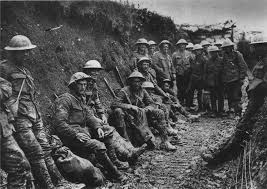By the early 1900s, the gold standard reached its peak. Nearly every major economy had joined the system, and for the first time in history, the world had a truly global monetary system. Money was stable, international trade was booming, and people trusted that their paper money was as good as gold—because, well, it was literally backed by gold!
But while everything seemed great on the surface, cracks were already forming. The gold standard was rigid, meaning it worked well when things were stable, but it wasn’t built to handle big shocks like wars or financial crises. And as we know, a massive shock was just around the corner—World War I.

Why Was the Gold Standard So Strong in the Early 1900s?
By 1900, most of the world’s biggest economies were on gold, and that created a super stable financial system. Here’s why:
1. Almost Every Major Country Was Using Gold
- Britain had been on gold since 1816 and dominated world trade.
- Germany (1873), the U.S. (1900), France (1878), and Japan (1897) all joined in.
- Even countries in Latin America, Russia, and Asia started pegging their currencies to gold.
With so many countries on the same system, exchange rates were stable, making international trade easier and safer than ever before.
2. Trust in Money Was at an All-Time High
- Gold-backed money couldn’t be printed endlessly, which kept inflation low and predictable.
- People knew that paper money could always be exchanged for gold, so they had full confidence in it.
3. Global Trade Was Thriving
- The Industrial Revolution had made shipping and production faster, creating huge international trade networks.
- Gold-backed currencies made transactions simple, predictable, and trustworthy.
✅ Result: The world economy was booming, and the gold standard seemed like the perfect system.
How Did the Gold Standard Actually Work at Its Peak?
The early 1900s gold standard was like a well-oiled machine. Here’s how it kept everything running smoothly:
A. Fixed Exchange Rates
- Every country’s currency had a fixed value in gold.
- For example, 1 British pound = 7.3 grams of gold, 1 U.S. dollar = 1.5 grams of gold.
- This meant exchange rates never fluctuated wildly, making trade predictable.
B. Free Gold Convertibility
- You could walk into a bank and exchange your paper money for real gold at any time.
- Governments couldn’t print extra money unless they had more gold to back it up.
C. Automatic Economic Adjustments
- If a country imported too much and lost gold, the money supply would shrink, slowing down the economy and making its exports cheaper.
- If a country exported more and gained gold, its money supply would grow, boosting economic activity.
- This created a self-regulating system that kept everything in balance.
✅ Result: The world economy was running like clockwork—until it wasn’t.
The Hidden Weaknesses of the Gold Standard
Even though everything seemed perfect, the gold standard had some serious built-in flaws.
1. No Room for Emergency Spending
- If a country needed to spend money fast (like for a war or crisis), it couldn’t just print more cash—it had to have gold to back it up.
- This meant governments had very little flexibility when dealing with financial shocks.
2. Depended on Gold Supply
- If not enough new gold was being mined, economies could struggle with deflation (falling prices and slower growth).
- Countries like the U.S. and Britain relied on gold discoveries (California Gold Rush, South African mines) to keep their economies growing.
3. Bank Runs & Financial Panics
- Since people could exchange paper money for gold at any time, panics could drain a country’s gold reserves overnight.
- If too many people demanded gold at once, banks could collapse, creating a financial crisis.
✅ Result: The gold standard was stable—but fragile. It worked only when nothing went wrong.
The Calm Before the Storm: 1910–1914
As the world entered the 1910s, the gold standard seemed unstoppable.
- Trade was at an all-time high.
- London, New York, and Paris were global financial hubs.
- Governments were running balanced budgets, avoiding reckless money printing.
But then, in 1914, everything changed. World War I broke out, and the gold standard was about to face its greatest test yet—one that it would not survive.
Conclusion: The Gold Standard at Its Peak
By 1914, the gold standard had created the most stable financial system in history. Countries that used it:
✅ Had predictable, stable economies.
✅ Experienced low inflation and strong global trade.
✅ Had currencies that were trusted worldwide.
But this system had one huge flaw—it couldn’t handle major crises like war. The moment World War I began, governments needed to spend money fast, and the gold standard tied their hands.
